Ayurvedic Kitchari
This Ayurvedic Kitchari is made with a mix of yellow split mung beans and basmati rice stewed together into a cozy dish. This recipe is meant to be easy to digest and is vegan and gluten-free.

What is Kitchari?
Kitchari, also commonly known as Khichdi is an ayurvedic dish that is traditionally made with mung beans, rice and digestive spices. In Ayurvedic tradition, it’s considered to be a very healing and detoxifying dish.
While I was in Northern India studying yoga and Ayurveda, this was a dish that was commonly served on the ashram.
This recipe is inspired by the traditional recipe I ate while in India!
The benefits of eating kitchari/Khichdi
It may seem a bit odd that a “detox” recipe can be made of rice and beans, since we commonly associate the term with eating lots of greens, fruits and salads.
But this dish is actually considered a detoxifying and healing food for a few reasons:
- Kitchari is made with split Mung beans, which are easy to digest (unlike some other types of beans)
- Kitchari is a complete protein
- Kitchari helps to improve your digestion and is made with specific digestive spices
Not to mention, it’s pretty darn tasty and filling too!
How to make this recipe
Before jumping into making the recipe, you’ll want to soak your split mung beans and rice in a bowl of water. This makes it easier to digest. Next, you can toast up the spices in a pot then add the beans and rice along with some water.
Cover it and let everything simmer for about 30 minutes. You should end up with a stew-like mixture that looks like this.
Tips for making this recipe perfectly
- Don’t skip out on soaking the split mung beans and rice for best results! This really helps to make these easier to digest.
- Be careful not to toast your spices on too high heat, you don’t want them to burn-just to get lightly toasted and fragrant.
- If your Kitchari is looking very thick, you can simply add more water and mix through.
- Always taste and adjust seasoning with salt at the end if needed.
Similar recipes to try
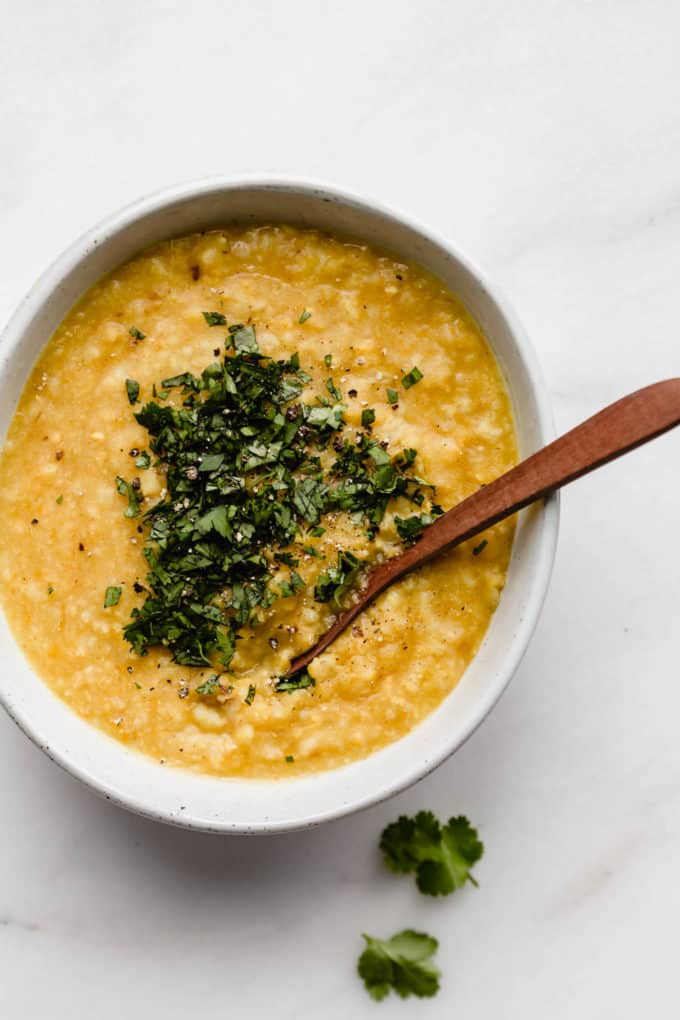
If you tried this Ayurvedic Kitchari or any other recipe on the blog let me know how you liked it by leaving a comment/rating below! Be sure to follow along on Pinterest, Instagram and Facebook for even more deliciousness!
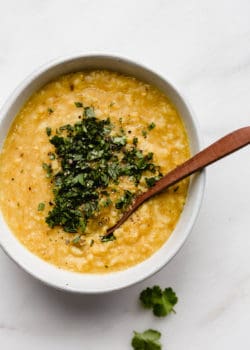
Ayurvedic Kitchari
- Prep Time: 15 minutes
- Cook Time: 30 minutes
- Total Time: 45 minutes
- Yield: 4 servings 1x
- Category: Main
- Method: Cook
- Cuisine: Indian
- Diet: Vegan
Description
This Ayurvedic Kitchari is easy to digest and perfect for a simple, healthy meal!
Ingredients
- 1/2 cup split mung beans (called moong dal)
- 1/2 cup basmati rice
- 1 tbsp coconut oil (can sub ghee for traditional)
- 1 1-inch cube ginger, finely chopped
- 1/2 tsp cumin seeds
- 1/2 tsp mustard seeds
- 1/2 tsp black pepper
- 1 tsp salt sea salt
- 1/4 tsp ground turmeric
- 1 bay leaf
- 4 1/2 cups water
Instructions
- Soak the split mung beans and basmati rice in a bowl of water for 15-20 minutes. Then rinse in a strainer until the water runs clear. (This helps make them easier to digest.)
- Heat the coconut oil in a pot on medium heat, then add the ginger, cumin seeds, mustard seeds, pepper, salt, turmeric and bay leaf and gently toast for 1-2 minutes until fragrant
- Add the split mung beans, basmati rice and water to the pot and bring to a boil, then cover and let simmer for 25-35 minutes. (If the mixture soaks up all your water and you prefer a slight thinner texture, add a bit more)
Notes
Don’t skip out on soaking the split mung beans and rice for best results! This really helps to make these easier to digest.
Be careful not to toast your spices on too high heat, you don’t want them to burn-just to get lightly toasted and fragrant.
If your Kitchari is looking very thick, you can simply add more water and mix through.
Always taste and adjust seasoning with salt at the end if needed.
Nutrition
- Serving Size: 1/4 of recipe
- Calories: 220
- Fat: 4g
- Carbohydrates: 35g
- Fiber: 4g
- Protein: 9g

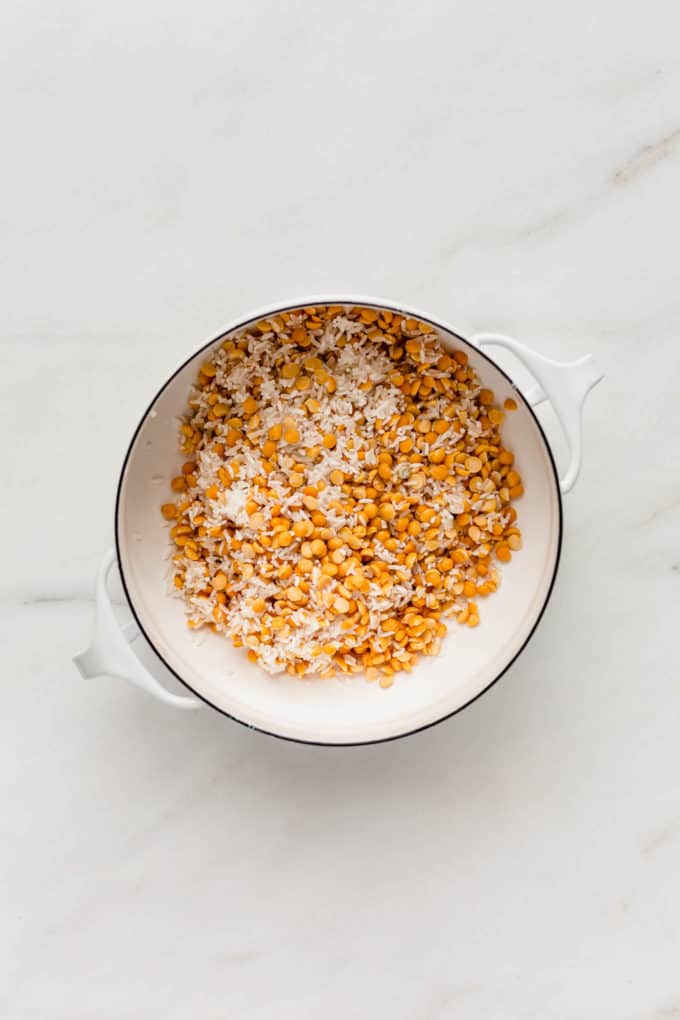
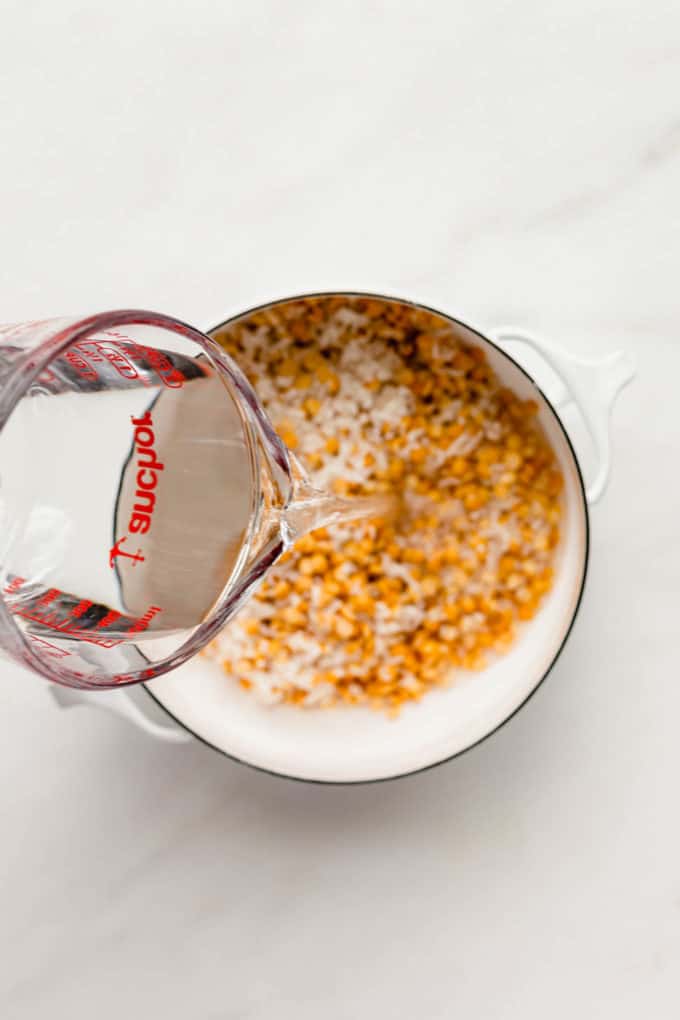

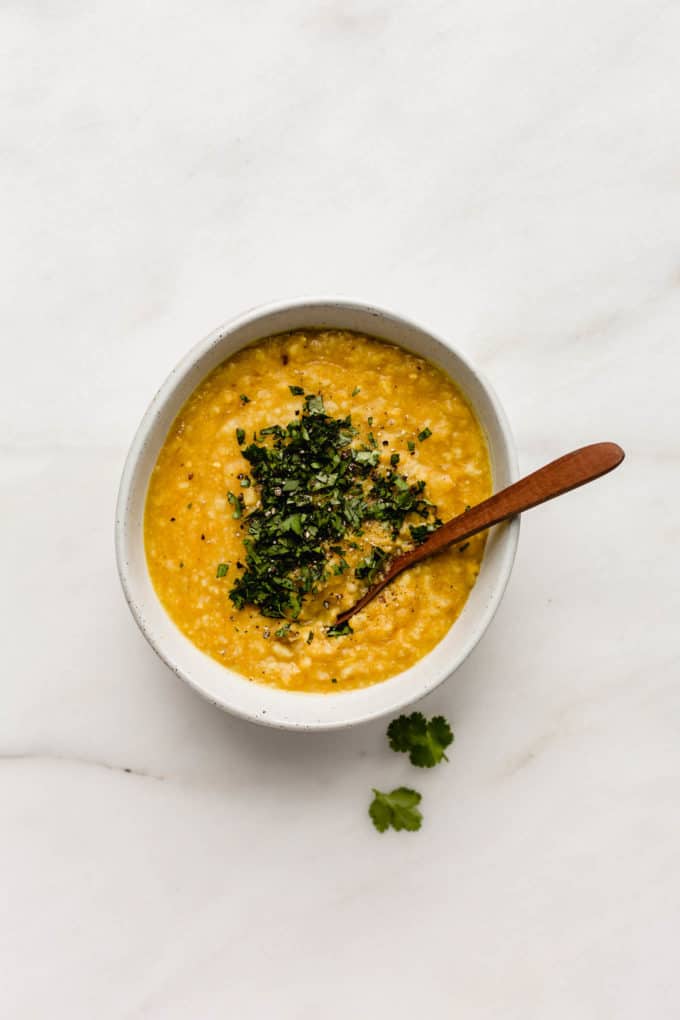








I don’t have cumin seeds. I have ground cumin- or fennel seeds. what you recommend? I’d also like to make it a curried kitcheri. How could I do that.
Thanks
Monique
You can use ground cumin!
Love this recipe! I’ve made it 3 times now. My kids enjoy it as well, which was a happy surprise. They come running into the kitchen when they hear the grinding of the mortar and pestle. And then they hang out and help until it’s ready… even my pre-teen. Thank you!!
So glad you’re loving it! 🙂
Wow this is delicious! Even better the next day. Happy to know such a delicious mung bean recipe. I’m surprised my 2 yr old gobbled up the spices but I think they are just right and not too overpowering. Thanks again Jess doe another yummy one!
Thanks nicole! So happy you liked it. I also think it’s better the second day after all the flavours sit. So cozy 🙂
Hi Jess!
Thank you kindly for sharing your delicious, healthy recipies!
I was wondering if red or black rice can be used instead of basmati rice, since they are healthier.
Many thanks,
Mihaela
Hi Mihaela, yes you can! 🙂